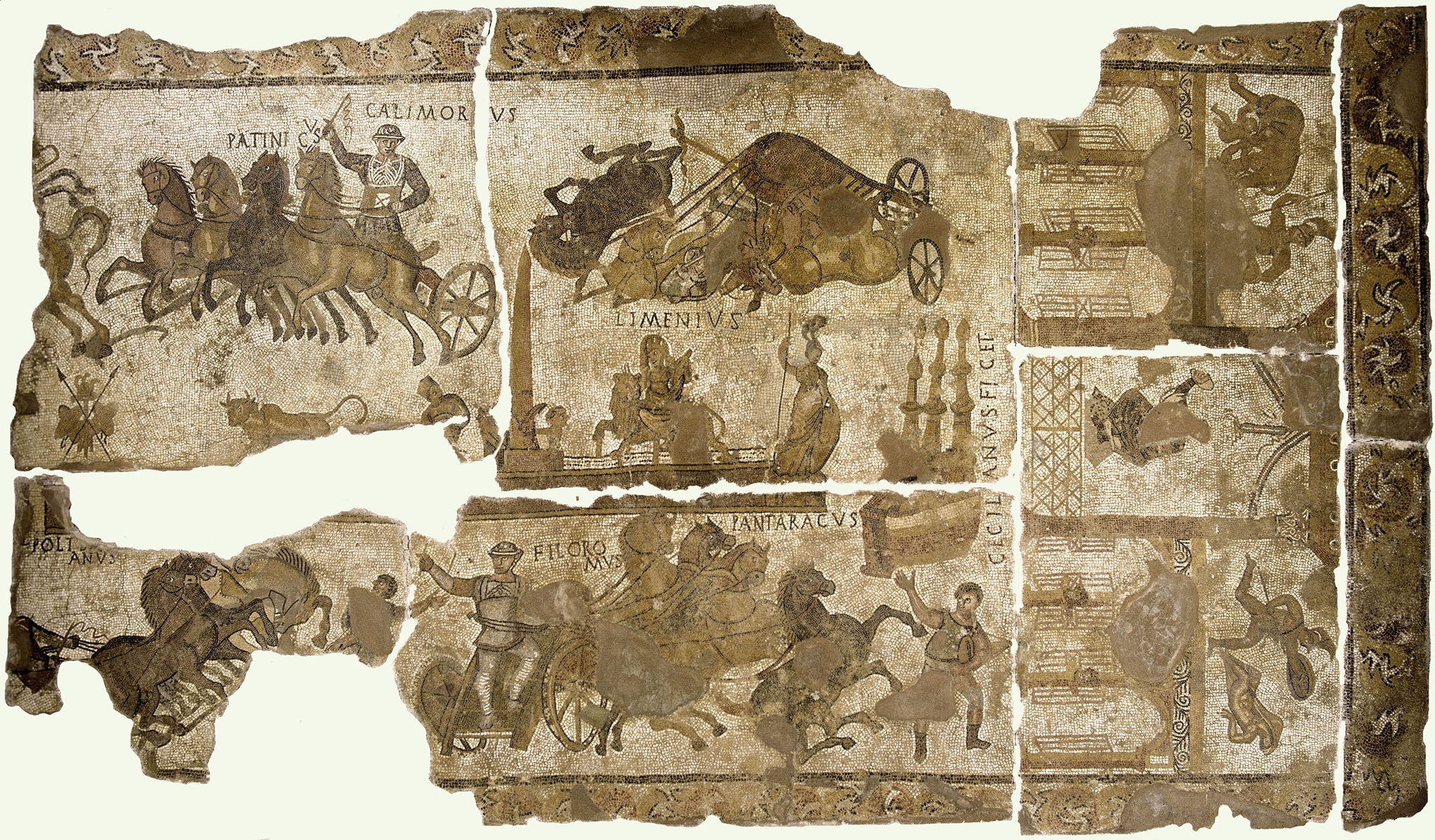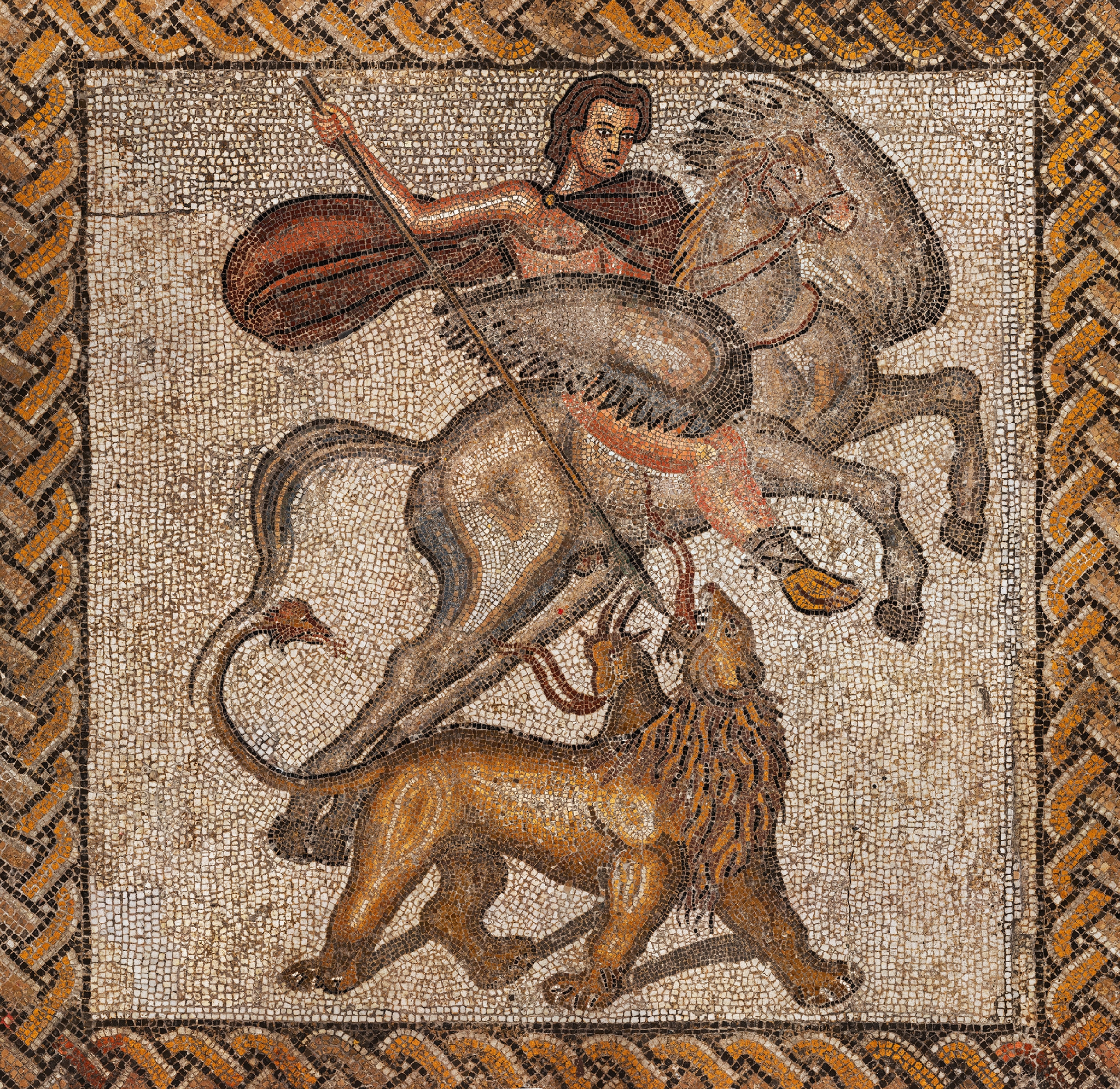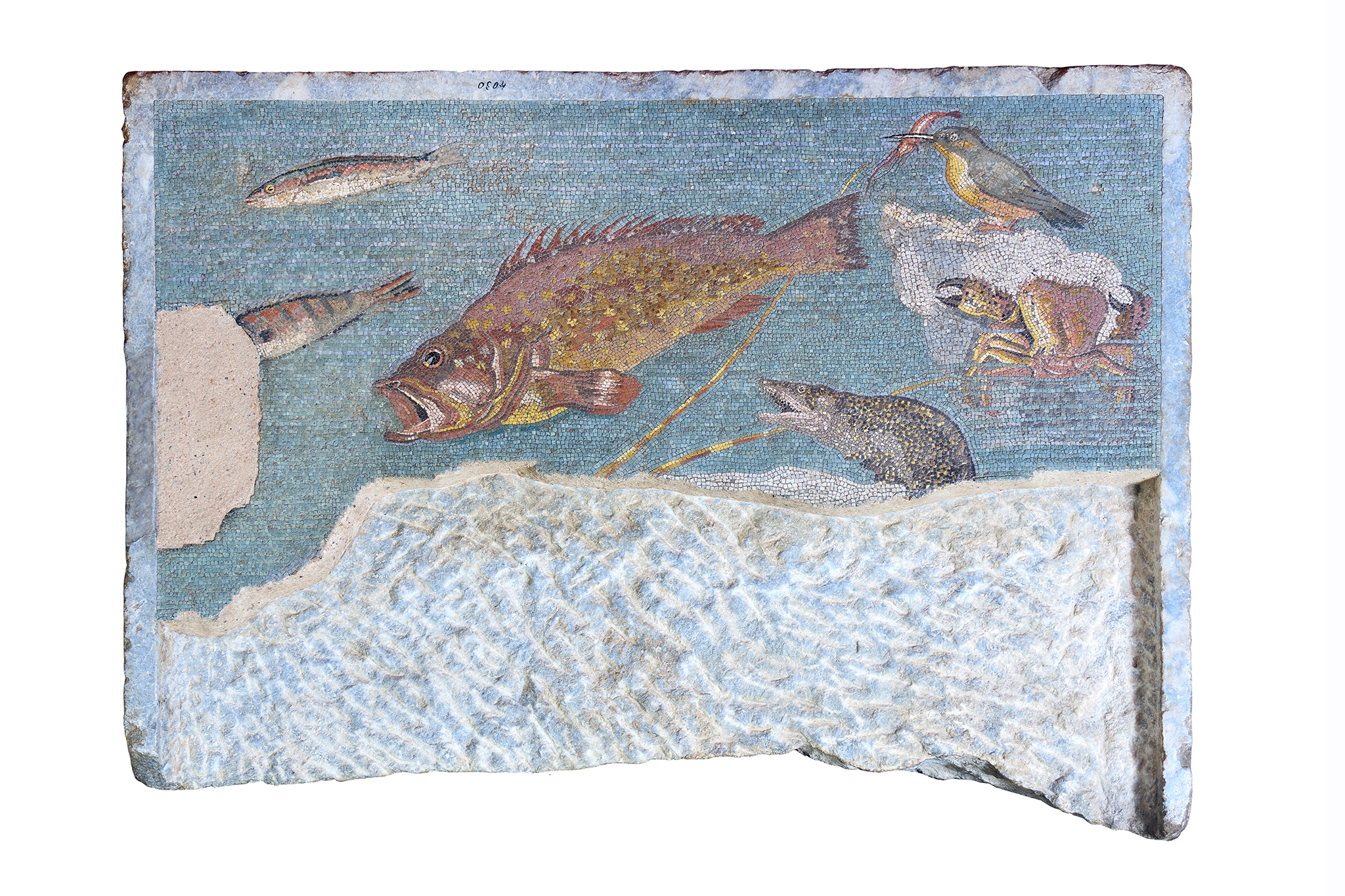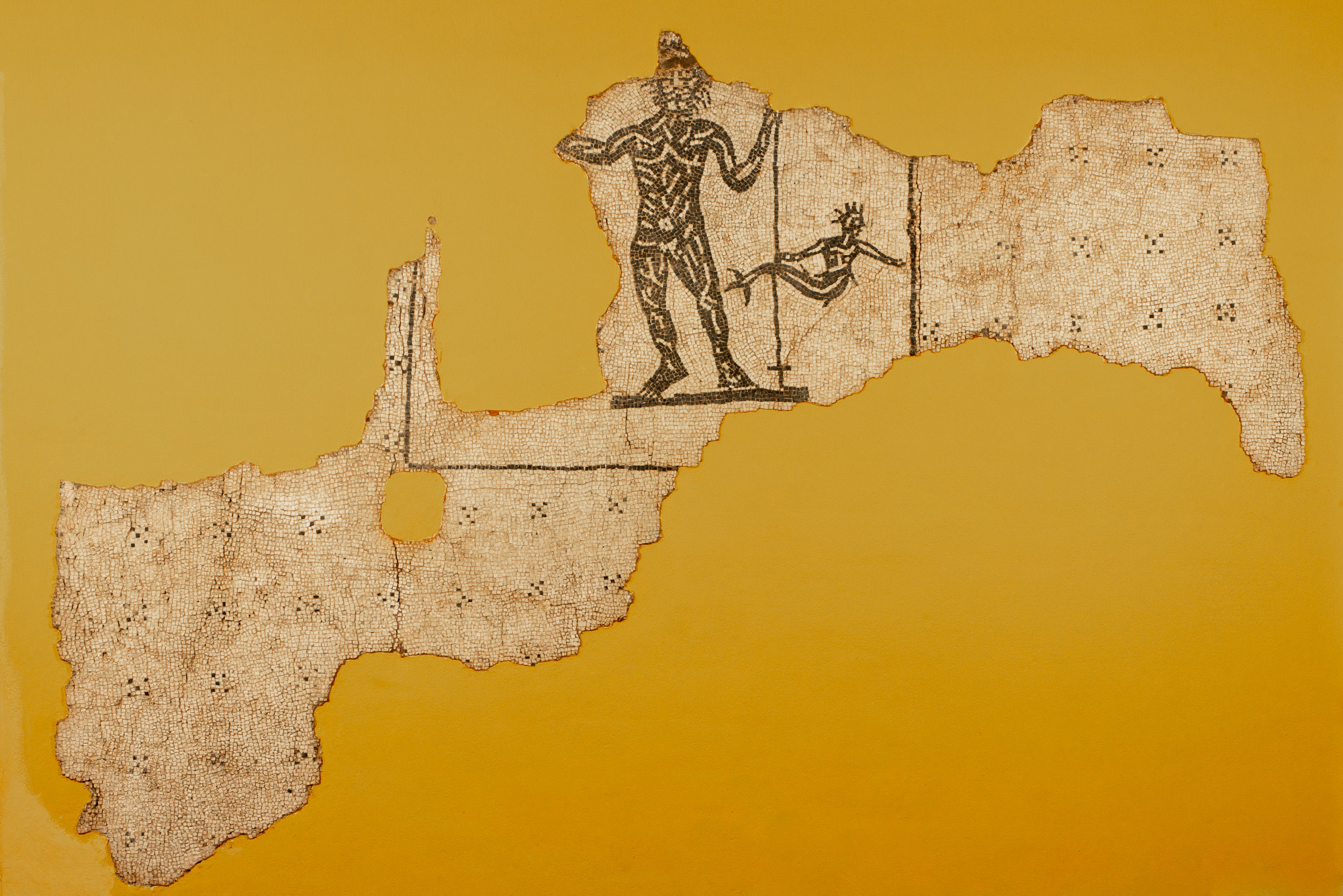- Object type
- mosaic
- Production date
- 100 / 300
- Fabric -
- Museum
- Museu de Badalona
- Culture
- Roman world
- Discovery location
- Ciutat romana de Baetulo. Carrer Pujol
- Materials
- limestone
- Township
- Badalona (Europa, Espanya, Catalunya, Barcelona, Barcelonès)
- Technique
- opus musivum
- Where is it?
- Exposició permanent
- Dimensions
- 1,50 x 1,60 cm






